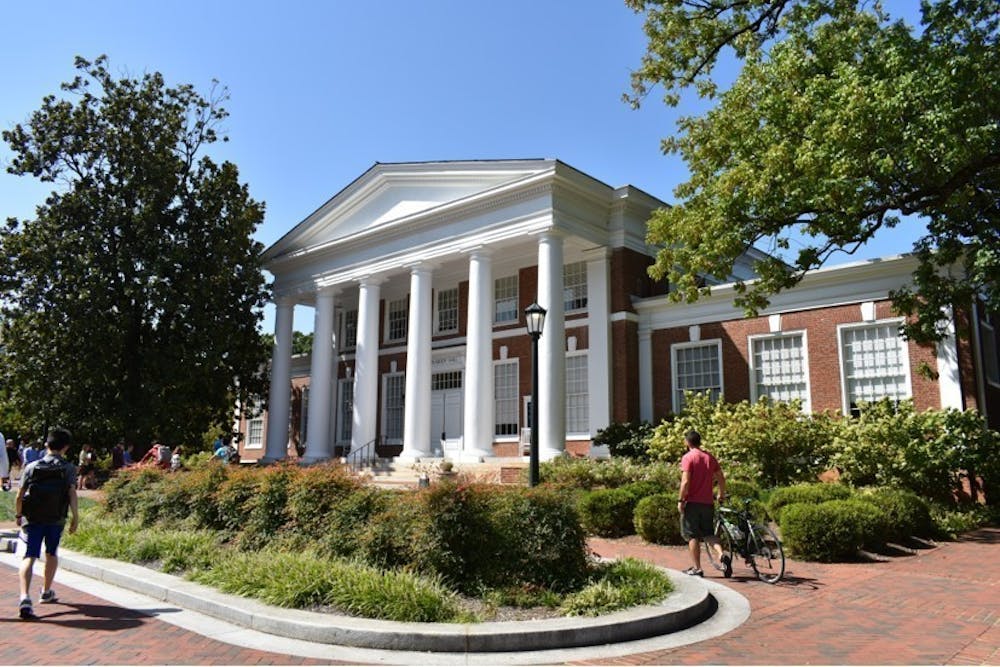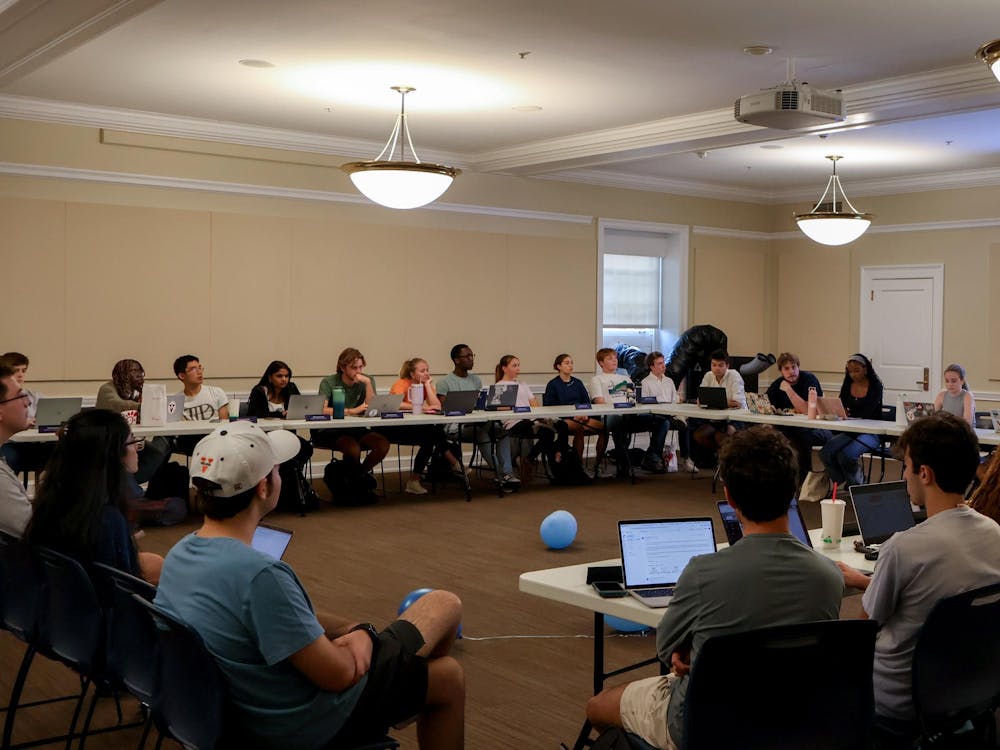Despite a year of virtual programming and Zoom events instead of the typical in-person panels and tours offered to prospective students and parents, the University received 47,827 total applications for its target of 3,800 spots in the Class of 2025 — a 17 percent increase from last year. The University also offered admission to 968 early decision applicants, a 33 percent acceptance rate.
This year, roughly 61 percent of applicants opted to apply for early action admission, 6 percent applied through the early decision option and 16,025 applicants applied for regular decision admission.
Early decision admissions
Students who apply through early decision enter into a binding agreement to enroll at the University upon acceptance and rescind their applications to other schools. In contrast, the early-action and regular-decision admission plans are non-binding and unrestrictive.
Two years ago, the University decided to include a binding early decision option for applicants for the first time since 2006, when the option was eliminated due to equity concerns — applicants who do not demonstrate financial need and are from Virginia are more likely to use the early decision process due to its binding nature, while minority, low-income and international students tend to use the early action and regular decision avenues.
Now, U.Va. supports low-income applicants by releasing accepted students from ED agreements if they deem their financial aid insufficient. The University also waives deposit and application fees and sponsors different programs to reach first-generation, low-income and underserved minority students.
Compared to 2019, early decision applications increased by 35 percent and early action applications increased by 15 percent during the current admissions cycle. Dean of Admissions Greg Roberts told The Cavalier Daily that he thinks this may have been because students were more aware of the early decision option in its second year of implementation. Ultimately, 2,918 applicants applied under the University’s early decision deadline and 968 were offered admission.
Students this year were also not required to submit standardized testing, since the COVID-19 pandemic caused many ACT and SAT test dates to be postponed and canceled. Out of all early applicants, 39 percent applied without submitting test results.
Because the University is public, in-state residency is a major component of admissions — roughly two-thirds of the undergraduate student population are from Virginia. The early decision acceptance rate for in-state applicants was 39.2 percent, compared to a rate of 25.7 percent for out-of-state early decision applicants.
The University has stated that students who apply early decision will not have an advantage over those who apply through early action or regular decision. Early decision acceptance rates are generally higher than the rates for early action or regular decision, but Roberts attributed this to the fact that the early decision pool is by far the smallest applicant pool.
“Approximately 10-11 percent of the total admission offers that we make this year will be made in our early decision round,” Roberts said in an email. “This is a very small percentage, especially compared to peers who enroll up to 50 percent of their first year class through ED.”
For high school seniors, the early decision program allows students to complete their college admissions process by December and eliminate unnecessary additional applications. Wyatt Aldhizer — a in-state student who was accepted under early decision this year — said that he applied because he wanted to get the stress of college applications out of the way.
Due to the COVID-19 pandemic, the class of 2025 is applying to college while also dealing with senior year online.
“Personally, I was so engaged in my online school work trying to figure out the basics of online learning that before I knew it, applications were due,” Aldhizer said.
Another result of the pandemic is that many students from the class of 2024 took a gap year, filling up part of the class of 2025. Aldhizer was worried about the limited spaces for acceptances, so he was glad to hear from his top choice early on.
“Not having to wait as long for college decisions was easily the biggest benefit,” Aldhizer said. “The only drawback would be that you can’t compare financial aid offers with other schools.”
Out of the early decision applicants, 26.6 percent were deferred, meaning that those students’ applications will be reconsidered under the regular decision cycle with their mid-year grades and are no longer constrained to early decision binding enrollment.
Of the accepted students under early decision, eight percent are first-generation college students and 14.5 percent are legacy students. A legacy is a student whose parent has graduated from U.Va. — a status considered in admissions decisions.
In addition, 57 percent are white, 31 percent are underrepresented minority students, 7.5 percent are international students and 4.5 percent did not provide their race. The University accepted 554 female students and 414 male students — 57.2 percent and 42.8 percent respectively.
Regular decision applicants
Out of the roughly 16,000 regular decision applications received this year, 1,579 were from prospective Black students, bringing the total percentage of Black applicants to 19 percent more than that of last year’s pool.
The University also saw an increase in Hispanic applicants, totaling to 4,167 prospective students, with 1,700 applying for regular decision admission. This marks a 22 percent increase in Hispanic applicants since last year’s application cycle.
This year, 15 students identifying as American Indian applied for regular decision admission, bringing the total number of prospective American Indian students to 40, a 60 percent increase in applications from last year.
The University saw a significant increase in applications from foreign national students for the Class of 2025. This year saw a 12 percent increase in foreign national applicants, with 5,049 applying for admission to the Class of 2025 in comparison to 4,509 for the Class of 2024.
First-generation college applicants comprised 12 percent of this year’s applicant pool at 5,937 applicants, marking a 17 percent increase from last year.
Nearly 6 percent of applications for the Class of 2025 came from prospective legacy students, with 575 applying for regular decision admission and 2,677 applying overall. This is an 11 percent increase in legacy applicants in comparison to last year’s pool.
Notably, the only percentage that did not change was the balance of in-state versus out-of-state applicants, with 70 percent of applicants residing outside of Virginia, a figure nearly identical to last year.
Diversity and virtual recruitment efforts
Roberts noted the importance of attracting an incoming class filled with a diversity of background and interests.
“The diversity of the enrolling class is always a top priority for us,” Roberts said. “We expanded our search for students this year and invested heavily in virtual recruitment programming designed for different types of students with different questions and interests.”
This year, the Office of Undergraduate Admissions utilized a variety of online formats to connect with prospective students, including a weekly newsletter and a virtual event series. The series, which was hosted in late October, spanned a week and incorporated information sessions, student question and answer panels, admissions and financial aid sessions and specialized videos produced by major organizations on Grounds — including the Cavalier Marching Band, Housing and Residence Life, the music department and the Reserve Officers’ Training Corps.
Roberts said he believes the 17 percent increase in applications this year can be traced to a variety of factors, such as the work done by admissions officers to put forward extensive online programming. Roberts also noted that the University’s decision to make standardized tests optional this year also likely played a role — 42 percent of this year’s applicants opted to submit their application without the traditionally required test scores.
“I would like to think our robust virtual programming played a big role,” Roberts said. “We worked extremely hard developing panels, programs and events throughout the summer and fall that allowed us to showcase the University and its extraordinary opportunities. With that said, it is likely that our move to test-optional admission also contributed to the increase.”
Roberts said the admissions team implemented plans to work with alumni groups and University faculty in order to connect more with underserved and underrepresented prospective students. The office hosted events such as Fall Fling and Fall Blast, annual open-house programs for prospective African American and Hispanic students, respectively, online with the help of University students and organizations. Roberts said he believes these programs were highly successful at reaching a diverse array of potential applicants for the Class of 2025.
With in-person tours on hold due to the pandemic, members of the University Guide Service joined the admissions team to host high school students and potential applicants virtually. The U-Guides joined admissions deans on panels talking to high schools throughout the country, helped with Fall Blast and Fall Bling, and represented the University student body on a variety of information panels.
Abby Simmerman, fourth-year College student and member of the University Guide Service, said a small team of students worked throughout the summer and fall semester to still present prospective students with a picture of the University student experience.
“We did this through panels and presentations with Admission Deans, through office hours where we connected with high school students around the country for a more in-depth conversation about being a student at U.Va., and through our student-run blog and social media accounts,” Simmerman said in an email. “Online outreach allowed us to still reach prospective students and form personal connections, even over Zoom.”
Now, the Admissions Office is tasked with reviewing all 47,827 applications. While early action applicants will receive decisions in mid-February, regular decision applicants will be notified by April 1. Roberts is glad this pool of applicants demonstrates that students continue to be interested in coming to the University despite only connecting with the University virtually.
“Even though on Grounds events are on hold, U.Va. remains a top destination for students,” Roberts said. “Now we have the difficult job of evaluating 48,000 applications for 3,800 spots in the class, between now and April 1.”







